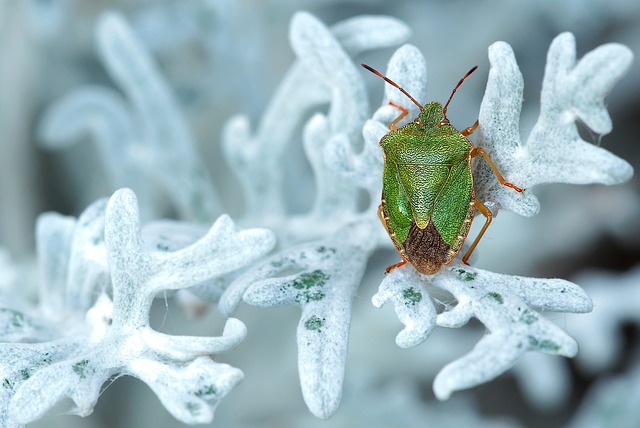Sowbugs, hiding in dark, moist places, cause damage to lawns and gardens. Professional commercial sowbug extermination services use a mix of chemical and non-chemical methods, including insect growth regulators and targeted insecticides, for effective removal. Prevention through regular cleaning, sealing entry points, and maintaining gardens is cost-effective. Natural solutions like removing organic debris, introducing predators, and using essential oils also offer eco-friendly alternatives to commercial services.
Controlling sowbug infestations in homes and gardens is essential for maintaining a comfortable living space. This article explores effective methods to combat these pesky critters, offering both professional and DIY solutions. We delve into the behavior and habitat of sowbugs, providing insights that aid in understanding their prevalence. For those seeking commercial sowbug extermination, we detail proven techniques used by industry experts. Additionally, home and garden prevention strategies are outlined for proactive measures. Discover safe and natural solutions to manage sowbugs effectively without resorting to harsh chemicals.
Understanding Sowbugs: Behavior and Habitat
Sowbugs, scientifically known as Meristena or Onychiurus species, are small, wingless insects that can become a significant pest in homes and gardens. Understanding their behavior and habitat is crucial when it comes to effective control methods for commercial sowbug extermination. These creatures prefer dark, moist environments, often hiding in cracks, crevices, and the undersides of objects where they feed on organic matter, including plant debris, molds, and mildew.
Their nocturnal nature makes them less visible during the day, but their presence can be identified by the telltale signs of damage: patches of matted grass, holes in carpets or upholstery, and the peculiar scent they emit when disturbed. Given their elusive behavior and diverse habitats, professional intervention is often necessary for complete sowbug extermination, especially in severe cases. Commercial pest control services employ specialized techniques and treatments to eradicate these insects from residential and commercial spaces effectively.
Commercial Sowbug Extermination Techniques
Many professional pest control services employ commercial sowbug extermination methods tailored for both residential and garden settings. These techniques often involve a combination of chemical and non-chemical solutions, ensuring effective sowbug control while minimizing potential environmental impact. One common approach is the application of insect growth regulators (IGRs), which disrupt the sowbugs’ life cycle by interfering with their molting process, ultimately leading to population decline.
Additionally, commercial exterminators may use targeted insecticides, carefully applied to areas where sowbugs congregate, such as under debris, in crevices, and along garden edges. Regular monitoring and maintenance are also key components of successful commercial sowbug extermination programs. This includes the placement of traps and baits to identify active infestations and pinpoint high-risk zones for future treatment.
Home and Garden Prevention Strategies
Preventing sowbug infestations is a proactive approach that can save homeowners and gardeners time, money, and effort in the long run. Regular inspections are key to early detection; checking areas prone to moisture build-up, such as basements, crawl spaces, and kitchens, can help identify signs of an existing problem. Maintaining a clean environment by promptly cleaning up spills, wiping down surfaces, and ensuring proper ventilation can deter sowbugs from seeking entry. Sealing gaps around pipes, drains, and other potential entry points using caulk or metal mesh prevents these pests from finding their way inside.
For gardens, keeping the area free of debris and organic matter reduces hiding places and food sources. Regularly trimming hedges and trees short enough to limit sowbug shelter options is also effective. Additionally, commercial sowbug extermination methods can provide long-lasting protection by targeting breeding sites and deterring future infestations. Implementing these prevention strategies acts as a robust defense mechanism, safeguarding both residential and gardening spaces from sowbug intrusions.
Safe and Natural Solutions for Management
When it comes to dealing with sowbug infestations, many homeowners and gardeners prefer safe and natural solutions as an alternative to harsh chemical treatments. These methods focus on prevention, sanitation, and the use of beneficial organisms. One effective approach is maintaining a clean environment by regularly removing organic debris like leaves and wood piles, where sowbugs thrive.
Integrating natural predators such as spiders, centipedes, and certain insect species can also help manage populations. Additionally, using essential oils like peppermint or tea tree oil, known for their repellent properties, can be a safe and eco-friendly way to deter sowbugs without resorting to commercial sowbug extermination methods.
Controlling sowbug infestations requires a multi-pronged approach. Understanding these creatures’ behavior and habitat is crucial, as is recognizing the effectiveness of both commercial sowbug extermination methods and natural solutions. By implementing prevention strategies in your home and garden, you can significantly reduce their presence. Remember that consistent effort and a combination of techniques are key to managing these persistent pests effectively.
